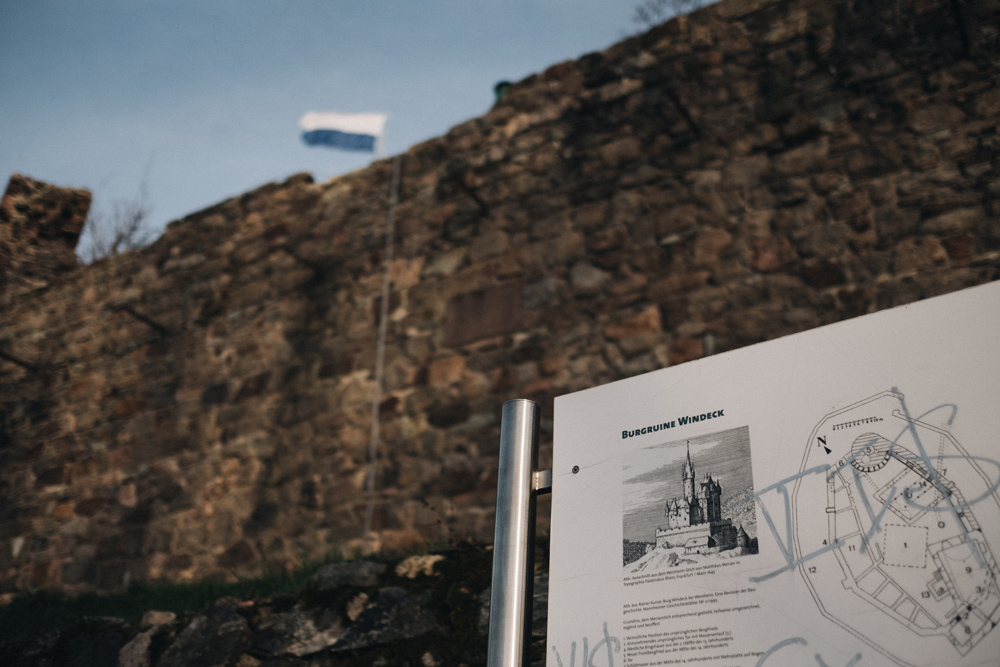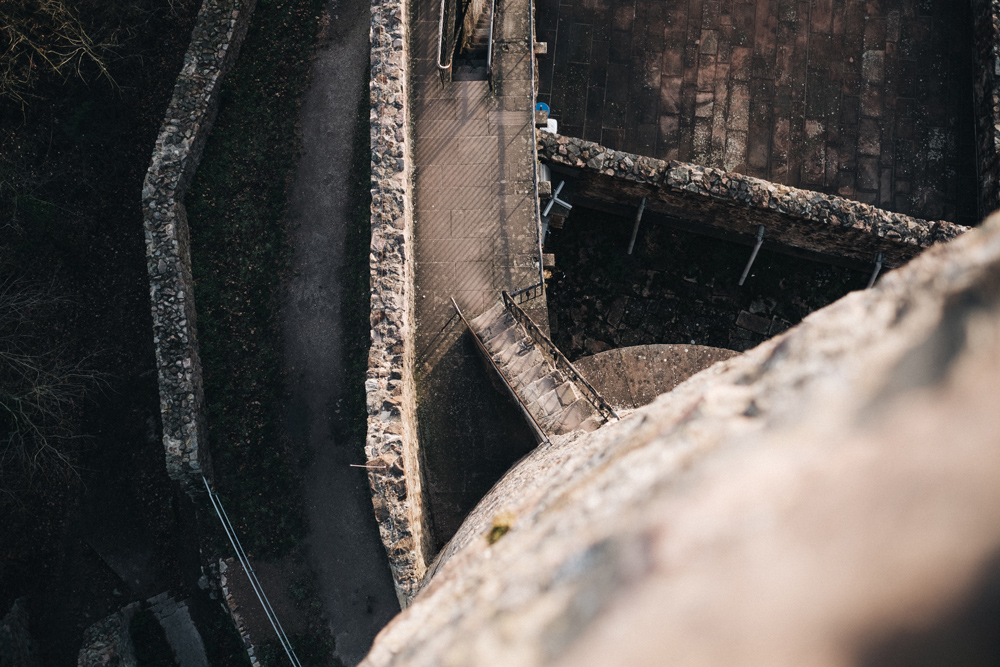Certain places can take you back in time, and these walls tell dark tales, without any words: the old castle ruin of Windeck and the Wachenburg Castle are located right along a hiking route, which runs for 120 kilometers, past around 30 castles and forts, between Darmstadt and Heidelberg: the Burgensteig (castle trail).
111 steps … one more, or less maybe? They are uneven in height and require concentration. Aside from that, only a small bit of light falls through the narrow windows in the heavy walls. Once anyone has reached the Windeck castle ruins keep, though, they will not be dwelling on the steps behind them. By then they should be enjoying the view, while dreaming of times, when knights rode their noble steeds through castle courtyards; times of Minnesang, paddles and frightening dungeons.
When Maria Zimmermanns hair is tangled by a breeze, on this fairly mild December day, she shrugs it of and remarks: “These are windy parts around here!” The 57-year-old manages the office for tourism, culture and public relations in Weinheim, and it doesn’t take long to understand how much the city, the Bergstraße and her work mean to her. Through one of the windows she glances towards the second landmark of Weinheim: the Wachenburg Castle, in the north-east of the town. The castle, with its characteristic brick-red roof, was built only at the beginning of the 20th century, by a union of traditional student fraternities, “the Weinheimer Seniorenconvent”, to create a meeting place, and also a memorial site for 23 fallen fraternity brothers, that died during the Franco-Prussian War in 1870/71. The castle is the youngest of its kind in the region.
Windeck, on the other hand, is the second-oldest castle along the Bergstraße. It was built after 1100, by abbots of the monasteries of Lorsch, so that they could protect their possessions in Weinheim. During the Thirty Years’ War (1618-1648), the castle was heavily damaged several times. In 1674 Marschall Vicomte de Turenne, Commander in Chief of the French troops, sealed the fate of the castle, by having it completely destroyed. After this the population of Weinheim pillaged the ruins for stones, to rebuild their houses. In 1900 the state of Baden sold the rest of the castle to the Earl, Sigismund von Berckheim, who protected it from further decay, and even had it rebuilt in parts. For the past 40 years the castle has belonged to the city, and it now maintains a restaurant.
Both of the landmarks of Weinheim lie along the Burgensteig hiking trail, which Maria Zimmermann promotes from two angles. For one, she volunteers as chairwoman of the Tourist Service Bergstaße, which unites all the regions destinations. She is spokeswoman for the association, and organizes both exhibition appearances and promotional materials, together with her colleagues. This includes promoting the 120 kilometer hiking trail, which leads from Darmstadt-Eberstadt to Heidelberg, past around 30 castles and forts.






















